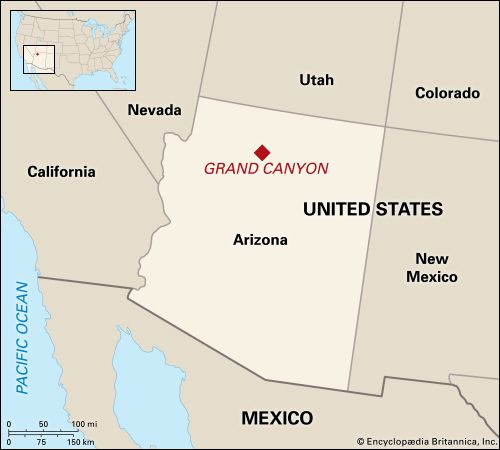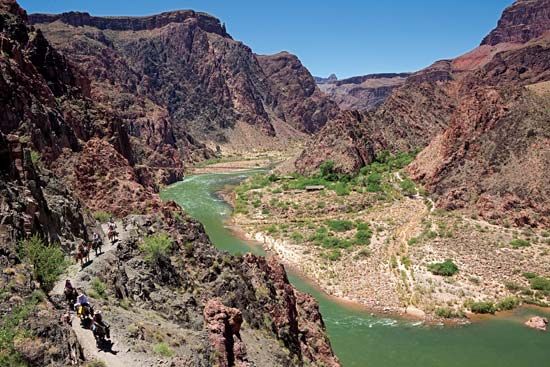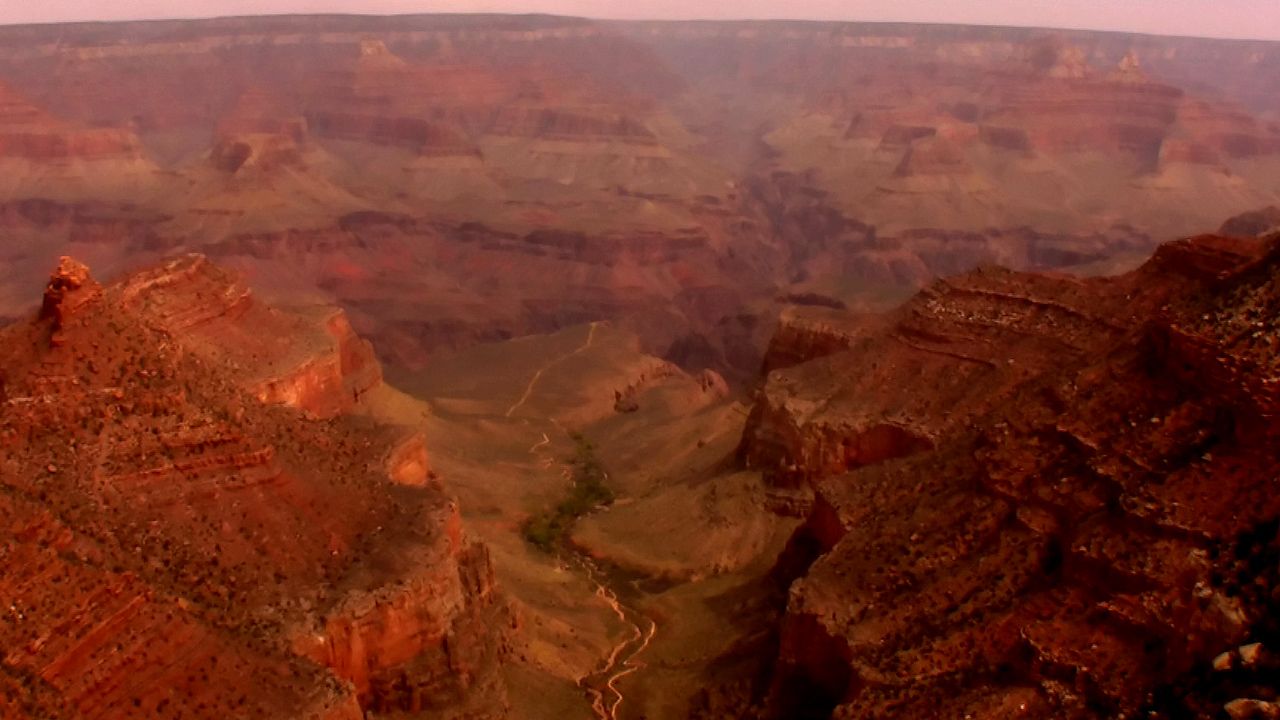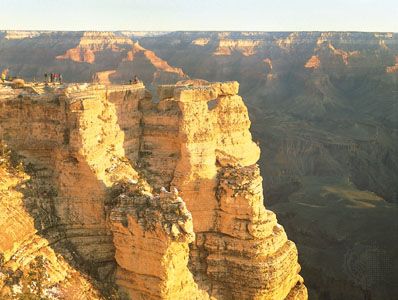 Noted for its fantastic shapes and colors, the Grand Canyon is one of the most spectacular sights in the United States. The vast canyon was cut through many layers of rock by the muddy waters of the Colorado River. It runs for 277 miles (446 kilometers) through northwestern Arizona, ranging from about 0.1–18 miles (0.2–29 kilometers) wide. In places the canyon is more than a mile (1.6 kilometers) deep.
Noted for its fantastic shapes and colors, the Grand Canyon is one of the most spectacular sights in the United States. The vast canyon was cut through many layers of rock by the muddy waters of the Colorado River. It runs for 277 miles (446 kilometers) through northwestern Arizona, ranging from about 0.1–18 miles (0.2–29 kilometers) wide. In places the canyon is more than a mile (1.6 kilometers) deep.

 Some of the rocks in the Grand Canyon are 4 billion years old. The Colorado River began eroding, or wearing down, the rocks about 6 million years ago. Wind and rain have helped the erosion process. Some of the rock towers that rise from the depths of the canyon look like castles and temples. The canyon is mostly red, but different layers of rock are buff, gray, green, pink, and violet.
Some of the rocks in the Grand Canyon are 4 billion years old. The Colorado River began eroding, or wearing down, the rocks about 6 million years ago. Wind and rain have helped the erosion process. Some of the rock towers that rise from the depths of the canyon look like castles and temples. The canyon is mostly red, but different layers of rock are buff, gray, green, pink, and violet.
Willow trees and cottonwoods grow at the bottom of the canyon where there is plenty of water. There are magnificent forests of pine, fir, spruce, and aspen on the canyon’s north rim. Cacti are common in drier areas. Wildlife includes coyotes, foxes, deer, badgers, pumas, bobcats, rabbits, squirrels, and chipmunks.

 Grand Canyon National Park was created in 1919 and enlarged in 1975. A paved road and a trail connect the north and south rims of the canyon. Mule-pack trips and river rafting are popular ways of exploring the canyon. The United Nations Educational, Scientific and Cultural Organization (UNESCO) declared Grand Canyon National Park a World Heritage site in 1979.
Grand Canyon National Park was created in 1919 and enlarged in 1975. A paved road and a trail connect the north and south rims of the canyon. Mule-pack trips and river rafting are popular ways of exploring the canyon. The United Nations Educational, Scientific and Cultural Organization (UNESCO) declared Grand Canyon National Park a World Heritage site in 1979.




